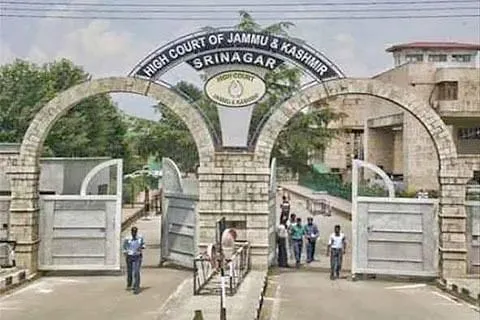J&K High Court has sought details of public land on which religious structures have come up illegally by way of encroachment in Jammu and Kashmir and Ladakh.
While hearing a PIL titled In Re Suo Moto Proceedings v State of J&K and Ors, a division bench of chief justice Gita Mittal and justice Puneet Gupta directed divisional commissioners of Jammu, Kashmir and Ladakh to obtain a report indicating all religious
structures on public land, location of encroachment, area encroached and details of the encroacher from all the deputy commissioners.
The court said the information shall be complied within six weeks and placed before the Chief Secretaries of J&K and Ladakh, who in turn in consultation with the concerned competent authorities shall take a policy decision to be placed before it by November 9.
Meanwhile, the court asked its Registrar General to consolidate a PIL filed at Jammu wing on the similar issue, with the instant petition.
The court listed both petitions on 9 November 2020.
Pertinently, the issue with regard to religious structures on public hand by way of encroachment on streets, parks and other places— had come up before the Supreme Court in 2009.
After taking into consideration a letter sent by the Union Home Secretary to Solicitor General of India, the SC in its order dated 29 September 2009 had issued notices to all States and UTs after impleading them as party in the PIL.
Meanwhile the SC had said that “no unauthorized construction shall be carried out or permitted in the name of temple, church, mosque or gurudwara on public streets, public parks or other public places.”
In respect of the unauthorized construction of religious nature which had already taken place, the SC had asked the state governments and the UTs to review it on case to case basis and take appropriate steps as expeditiously as possible.
The SC had directed all the district collectors and deputy commissioners to ensure there was total compliance of its order. They were directed to submit a report to the concerned chief secretaries or the administrators of the UTs who in turn would send a report to it.
The court had directed the chief secretaries to frame policy in consultation with the respective governments in respect of existing unauthorized construction of religious nature which had already taken place.
To ensure the implementation of directions issued by it, the SC had said that the implementation of the order should be supervised by the concerned High Courts and had remitted the matters it to the respective High Courts.






